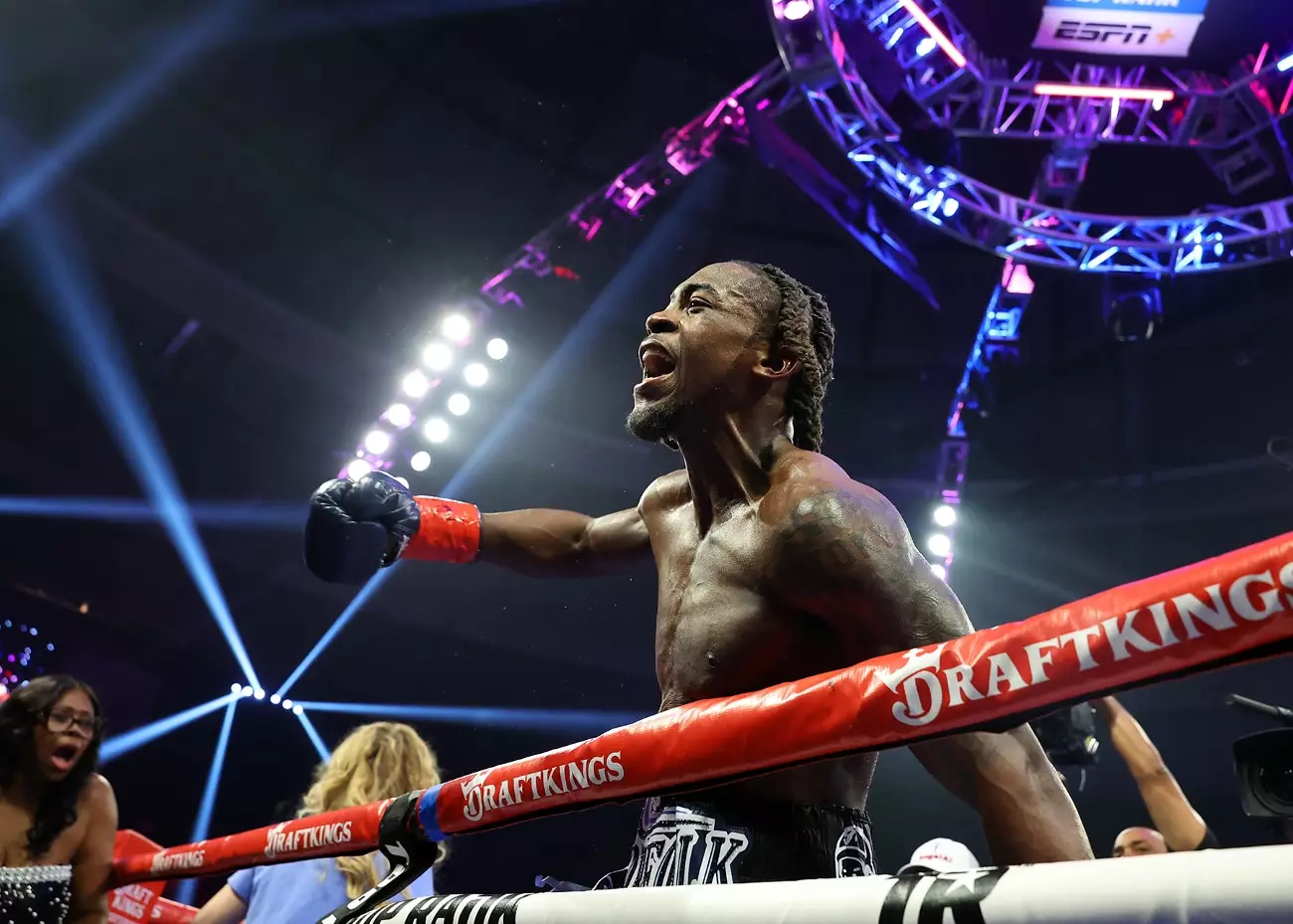By Carlos Martínez-
In the competitive lightweight boxing, few names have emerged with as much promise as Keyshawn Davis. Following his recent victory over Gustavo Lemos at the Scope Arena in Norfolk, Virginia, Davis solidified his position in the lightweight division, showcasing his skill set and game strategy. This article delves into that fight, exploring Davis’ technique, Lemos’ performance, and the implications for their respective careers.
Keyshawn Davis demonstrated the importance of tactical adaptability during his second-round knockout of Lemos. Under the guidance of his coach, Brian ‘BoMac’ McIntyre, Davis made crucial adjustments after a relatively unassuming first round. BoMac instructed him to employ a looping right hand, which resulted in a significant impact, knocking Lemos down. This tactical shift highlights Davis’ ability to listen to his coach and respond dynamically to the fight’s flow.
Davis initially focused on maintaining his distance, opting for a ‘stick and move’ approach. This strategy not only preserved his stamina but also allowed him to gauge Lemos’ speed and power. His decision to stop moving as much, combined with BoMac’s advice to use shorter steps, proved pivotal. The combination of timing and distance control enabled Davis to land efficiently, asserting his authority in the ring.
Lemos, on the other hand, appeared to struggle with a slow pace, which quickly unraveled his offensive capabilities. This stark contrast in adaptability and speed defined the fight’s outcome. While Davis adjusted and capitalized on openings, Lemos remained static, relying on power shots that lacked the necessary speed to be effective.
Analyzing Lemos’ performance raises questions about his future in the sport. While he previously faced off against notable opponents like Richardson Hitchins, his fight with Davis revealed significant flaws that seem to overshadow any prior acclaim. The disparity between Lemos’ previous performances and this fight suggests he may not be the formidable opponent he was perceived to be.
In his matchup against Hitchins, Lemos demonstrated some competitive spirit but ultimately ended up being exposed against Davis. Fighters in the lightweight division are notorious for their tactical acumen and speed, yet Lemos seemed outmatched and unable to adapt. His reliance on wild power punches was reminiscent of a fighter clinging to desperation rather than a calculated approach.
Davis remarked post-fight that Lemos was never a major threat. His insight reflects a growing understanding within the boxing community that Lemos, despite a couple of notable names on his resume, is now perceived as a below-average competitor in a highly competitive division. This begs the question of whether Lemos can redefine himself or if he will merely fade as a cautionary tale for other fighters.
As Davis improves his skills, the lightweight division is keenly observing his ascent. Currently holding an impressive record of 12 wins with 8 KOs, he is laying the groundwork for greater challenges. His impressive showing against Lemos could translate into opportunities against higher-ranked opponents. It is evident that with every fight, Davis is becoming more seasoned, mastering the technical aspects of boxing while also developing his in-ring instincts.
Davis’ assertion that he felt confident of a knockout after the first knockdown indicates the mental fortitude he possesses. This mindset will be invaluable as he navigates tougher opposition in the near future. His ambition to build a loyal fanbase, particularly in Virginia, also showcases his understanding of the sport’s commercial aspects, which is critical for sustained success.
Moreover, Davis’ emphasis on the support from his local fans demonstrates a burgeoning connection that can amplify his popularity. A strong crowd presence can elevate a fighter’s performance, providing a psychological edge that often influences judges and upcoming matchups.
Keyshawn Davis’s performance against Gustavo Lemos has opened many doors, not only for himself but also for discussions about the competitive landscape of the lightweight division. His ability to adapt and implement effective strategies speaks to a promising career ahead. Conversely, Lemos’ lack of adaptability raises doubts about his potential resurgence in the sport.
As Davis aims for the upper echelons of boxing, his recent victory serves as a reminder of the rigorous demands that accompany professional fighting. The future of Davis is bright, but the journey is fraught with challenges that will require continuous learning and adaptation. In a sport defined by its unpredictability, all eyes will undoubtedly remain on Davis as he seeks to etch his name among the elite in boxing.


Leave a Reply